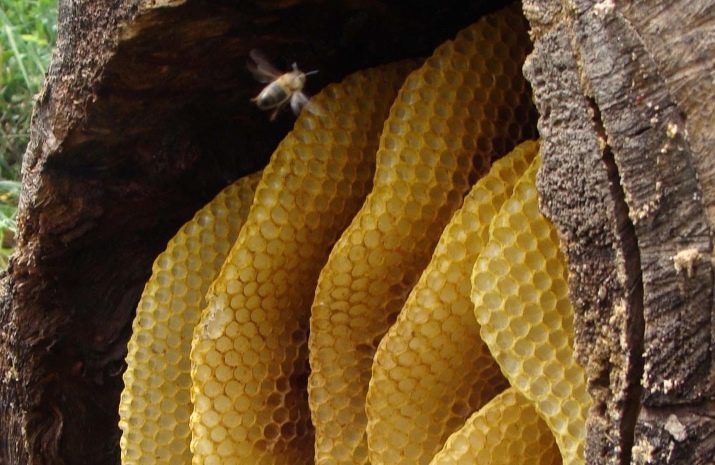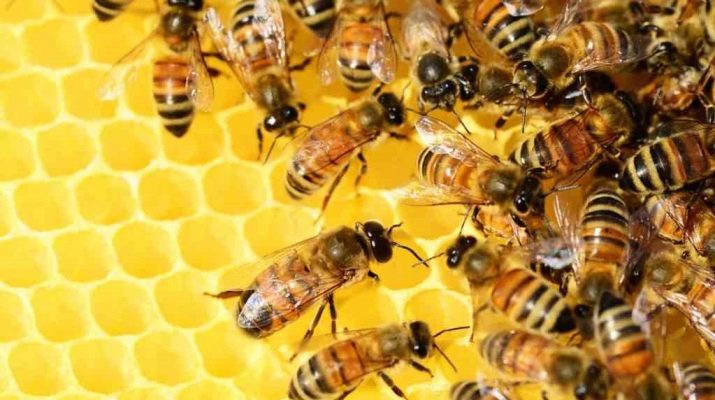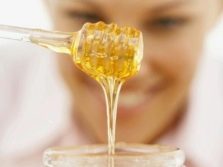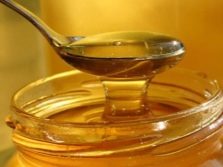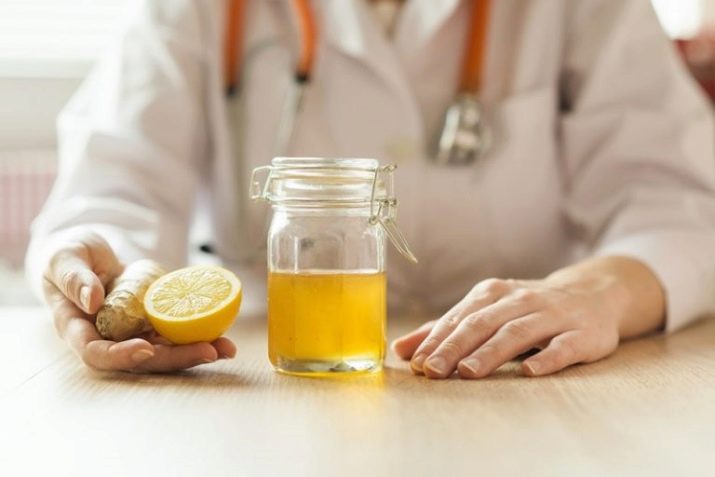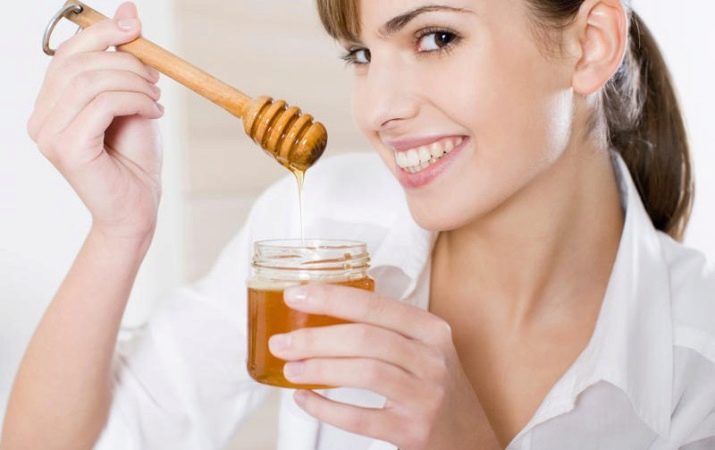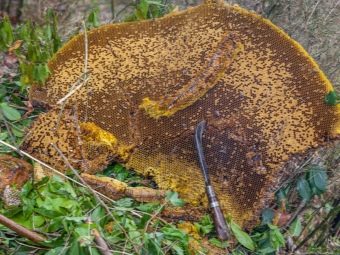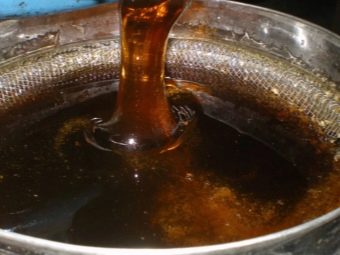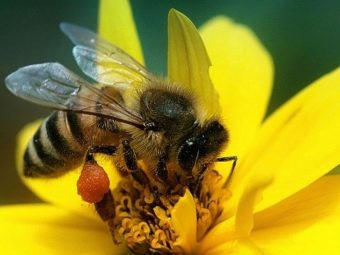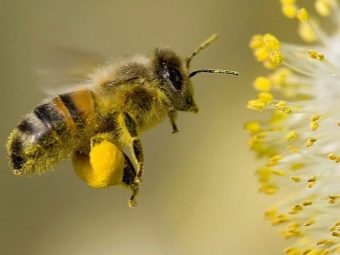Honey wild bees: what is it and how to choose?
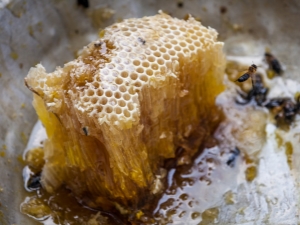
Wild bee honey is the most natural and environmentally friendly of all species, since it is produced exclusively by forest bees, which beekeepers do not “feed” with artificial additives and antibiotics.Production takes place in the mountains and in the forest with a clean environment and diverse and rich flora.
Special features
Wild honey is also called the bead because bees live in the beads - specially made recesses (tree hives) in trees or stumps, and the process of collecting such honey is called bortnicking. Sometimes the beekeepers make the boards themselves to know exactly where the honey is and easily find it.
Usually trees are chosen at the source with pure natural water, so that the bees have something to drink, and near rich flowering shrubs and fields. The boards are made higher, so that the sweet-bear bears will not reach the honey and not destroy the nest. In the hive put fragrant herbs and flowers for the bait of bees. Sweetness can be collected as early as next summer, after the boards have been formed.
Wild bees can be distinguished from domestic ones by a gray coloration; they do not have yellow stripes. Also, wild bees do not get sick, which has a very positive effect on the properties of the product they produce.
Wild bees are more industrious and hardy than their domesticated brethren. They are more aggressive than domestic bees, since no one creates a greenhouse for the wild species and has to defend and defend their own territory, earning themselves food. One family of bees in the flowering period collects from 5 to 15 kg of sweets.
On the territory of the Russian Federation at the moment there are only a few places where wild honey is produced. The main production is in the natural areas of Bashkortostan and the Carpathians. More rarely - in the Ural mountains and in Siberia. The most popular and trusted among gourmets and connoisseurs is still the famous Bashkir honey.
Harvesting is carried out only once a year, in August, so the honey turns out very mature, saturated, concentrated. Sometimes it may contain traces of wax and propolis, which adds great value and benefit to it.
Coast honey is collected exclusively by hand, very carefully. After collecting, beekeepers leave some honey to the bees themselves so that the hive does not cease to exist. Otherwise, the bees will have nothing to eat, then they may die.
There are very few wild bees left, they are listed in the Red Book, so the flight crew treat them very carefully, without blatant consumerism. Calorie wild honey is about 350-400 kcal per 100 grams. Only one teaspoon of a healthy product per day is enough to maintain health, so you should not worry about the figure.
Benefit
Wild honey is rich in various microelements and macroelements, minerals, enzymes, biologically active substances and organic acids, glucose, sucrose. This product has a lot of useful properties:
- immunity strengthening;
- anti-inflammatory effect;
- removal of toxins from the body;
- improved metabolism;
- strengthening the walls of blood vessels;
- slows the aging process of the body;
- improves blood properties;
- effectively destroys fungi and bacteria in the body;
- is the prevention of cancer;
- calms the nervous system;
- helps with depression and insomnia;
- positive effect on human hair and skin;
- stimulates muscle growth;
- helps to eliminate bile in the digestive organs;
- positive effect on the lungs, bronchi, respiratory tract;
- Royal jelly in the composition of the product improves the flow of metabolic processes in the body.
Take onboard honey you need on an empty stomach 20 minutes before a meal, just one teaspoon is enough. When contacting with metal, the beneficial properties of honey may deteriorate, so it is better to use a wooden spoon. In order to prepare a honey drink, honey should never be poured with boiling water, otherwise when exposed to high temperatures, all the benefits and useful qualities will not only evaporate, but also produce carcinogens that are harmful to human health. The product is best added to lukewarm water.
If desired, and for greater benefit, you can add a couple of pieces of lemon there, or just squeeze a few drops of lemon juice.
You can also pour into the drink a little decoction of herbs, for example, thyme to improve the work of the respiratory tract, especially during the cold season, or a decoction of chamomile to calm the nerves and a more relaxing sleep.
Since wild honey is collected only once a year, it is not used in the confectionery industry because of its rarity. Wild honey is easily absorbed by the body, so it can be given even in small doses in children. The properties of honey has accumulative actions, so you need to include it in your daily diet, then the benefits of consumption will be greatest.
Harm
Unlike homemade honey, wild is not as allergenic, although this product may be contraindicated for some people, for example, for people with allergies or diabetics. Allergy sufferers may experience an asthma attack, suffocation or anaphylactic shock. It is also worth carefully giving honey to young children, pregnant and lactating women.
It is better to start with half a teaspoon, and if any negative reaction appears, you should immediately stop taking the product.
Since the composition of honey contains sugar, when used excessively, it can clog the blood vessels, adversely affect the work of the kidneys and pancreas and provoke obesity. Therefore, to consume wild honey is moderately, no more than 5 tablespoons per day for an adult who has no other contraindications.
Tips for choosing
Unfortunately, when choosing wild honey, you can often stumble upon a fake. Unfair sellers, wanting to cash in on the sale of a healthy, environmentally friendly and natural product, can sell an unintelligible buyer a cheap fake, exposing it as real wild natural honey. From such a product will not be any good, but only the sweet taste and bitterness of the money spent in vain.
It is worth buying honey only in the checked places, from a manufacturer having a good reputation, who was advised by relatives or friends. There are several ways to help distinguish real wild honey from its fake counterpart.
Wild honey is a thick, sticky brown viscous mass that looks very appetizing and smells of flowers and herbs. The color of this wild honey will be rich, resinous-amber, dark. According to the consistency, it will be very viscous, thick, viscous, since honey collection takes place only once a year, most of the moisture will evaporate from it. Well, if the seller will have probes of honey, to appreciate its taste and aroma.
To taste, wild honey will be very tart, with a rich resinous and herbal flavor, this is its main difference from homemade honey.
The unusual taste is present due to the fact that wild bees collect pollen from forest herbs and honey plants are completely different wild plants: thyme, mint, linden, yarrow, wild rose, and ivan tea.
If the supposedly “wild honey” proposed to you has a rather liquid consistency, it spreads easily, has a light or yellow shade and smells like ordinary homemade honey, then it is better not to take it. It is also worth remembering that natural, healing high-quality wild honey can not be cheap. If you are offered to buy wild honey for a small amount, then you can be sure that most likely you have a fake.
For information on how wild honey is mined, see the video below.

